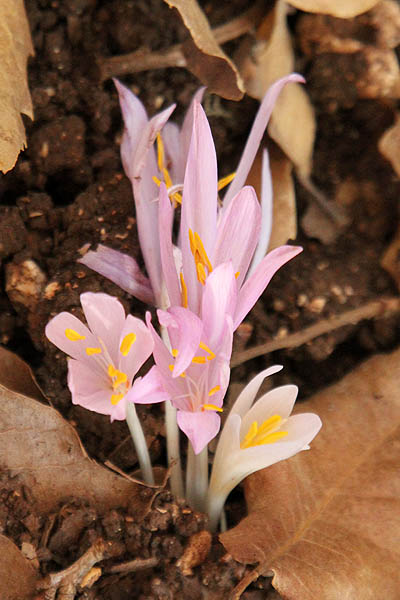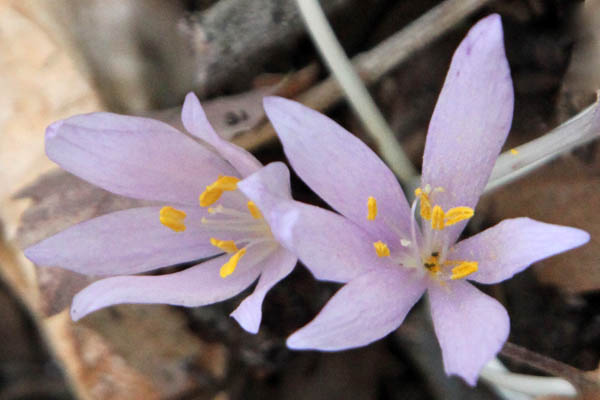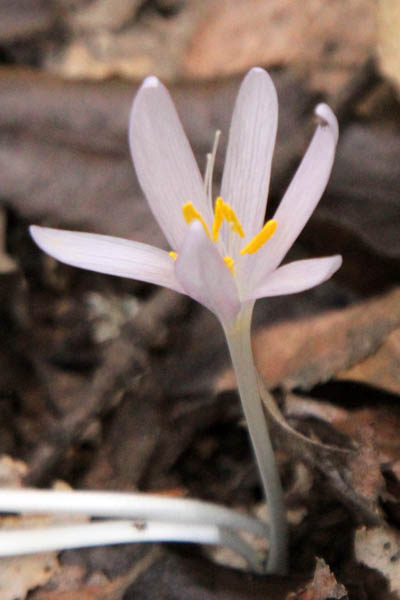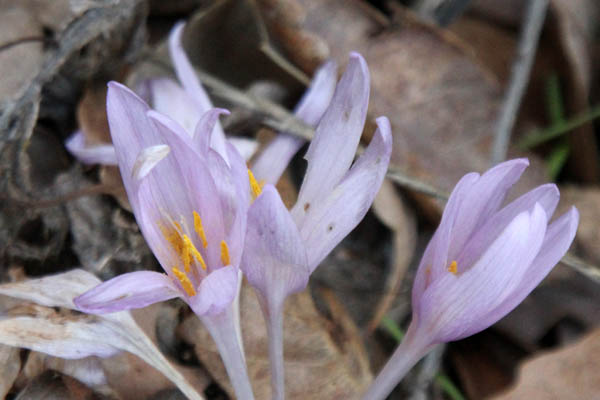Hebrew: סתוונית בכירה, Arabic: لحلاح دكين
| Scientific name: | Colchicum troodi Kotschy | |
| Synonym name: | Colchicum decaisnei Boiss. | |
| Common name: | Troodos Meadow Saffron | |
| Hebrew name: | סתוונית בכירה | |
| Arabic name: | لحلاح دكين | |
| Plant Family: | Colchicaceae, Colchicaceae plant family, סתווניים |

Location: Mount Meron, Peak Path |
| Life form: | Geophyte | |
| Stems: | Stemless | |
| Leaves: | Rosette, entire, smooth margin | |
| Inflorescence: | Solitary | |
| Flowers: | Hermaphrodite, White, pink, lilach | |
| Fruits / pods: | Many-seeded capsule | |
| Flowering Period: | October, November, December | |
| Habitat: | Mediterranean maquis and forest | |
| Distribution: | Mediterranean Woodlands and Shrublands, Montane vegetation of Mt. Hermon | |
| Chorotype: | Mediterranean | |
| Summer shedding: | Ephemeral |

Location: Mount Meron, Peak Path Derivation of the botanical name: Colchicum, Colchis, an ancient region on the Black Sea south of the Caucasus Mountains, now mostly the western part of Georgia. troodi, named after Troodos, the Troodos Mountains in Cyprus. decaisnei, named for Joseph Decaisne, 19th century Belgian-born French botanist, horticulturist, and director of the Jardin des Plantes, Paris.
It is probable that colchicum was known to the early Greeks under the term Ephemeron "which some call Colchicon". It was first referred to, and as a poison, by Theophrastus, and followed by Dioscorides in the "Materia Medica" (Ist-2nd cent.CE.), as it has come down to us in the "Julianae Aniciae Codex", transcribed before 512 CE. as a wedding present for the daughter of Anicius Olybrius, Emperor of the West (Born about 440 - Rome, Italy. Deceased 23 October 472 - Rome, Italy , age at death: possibly 32 years old), and now available in a photostat edition, speaks of "Ephemeron, which some call Colchicon", making the two terms synonymous. It then gives a description of a poison which could very well be the modern colchicum. "Some call the plant Colchicon, others call it Bolbos. The Romans call it Bulbus agrestis. As the autumn is drawing to a close, the plant puts forth a whitish flower, like the flower of the Crocus. Later it bears leaves somewhat like those of the Bulbus, but shinier. It has a stalk a span long and reddish seeds; its root has a tawny skin verging into black. When peeled, the root is found to be white, tender, full of juice, and sweet. The plant has its diaphysis at about its middle, from which point it sends forth its flower. The plant is found chiefly in Messenia and Colchis. When eaten, it has a fatal effect by choking, as is the case with mushrooms. We have described the plant so that no one may confuse it with the edible Bulbus and eat it by mistake. It has a strange attraction for the unwary because of its pleasant taste. To those who have eaten of the plant, drinking cow'smilk offers relief, as it does to those who have eaten poisonous mushrooms. Whenever there is cow's milk at hand, there is need of no other antidote." 
Location: Mount Meron, Peak Path 
Location: Mount Meron, Peak Path |